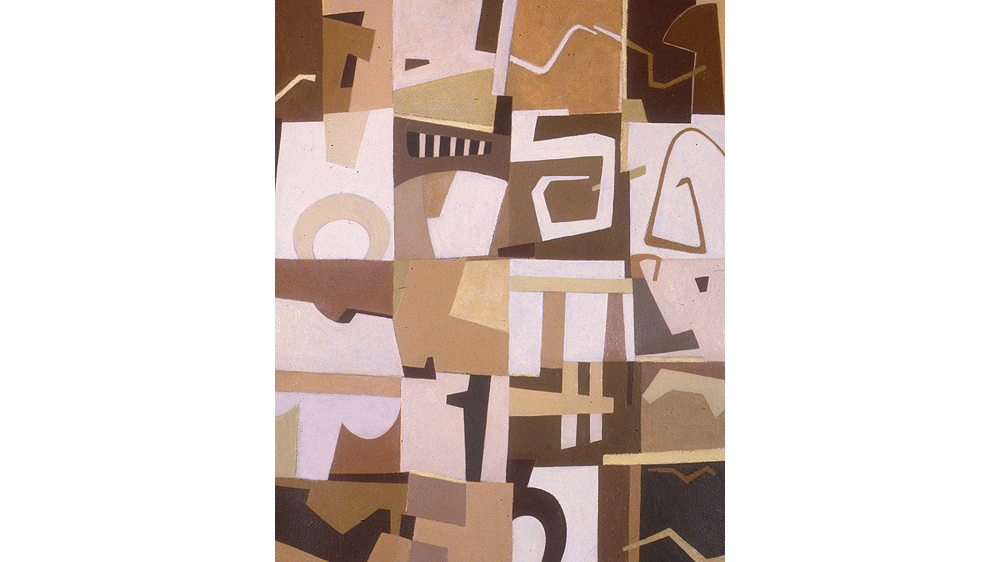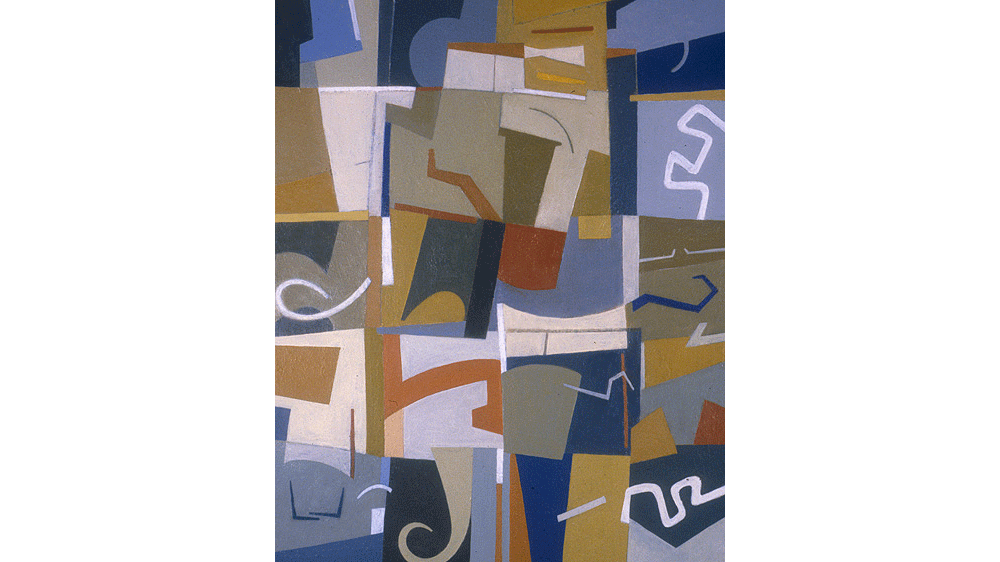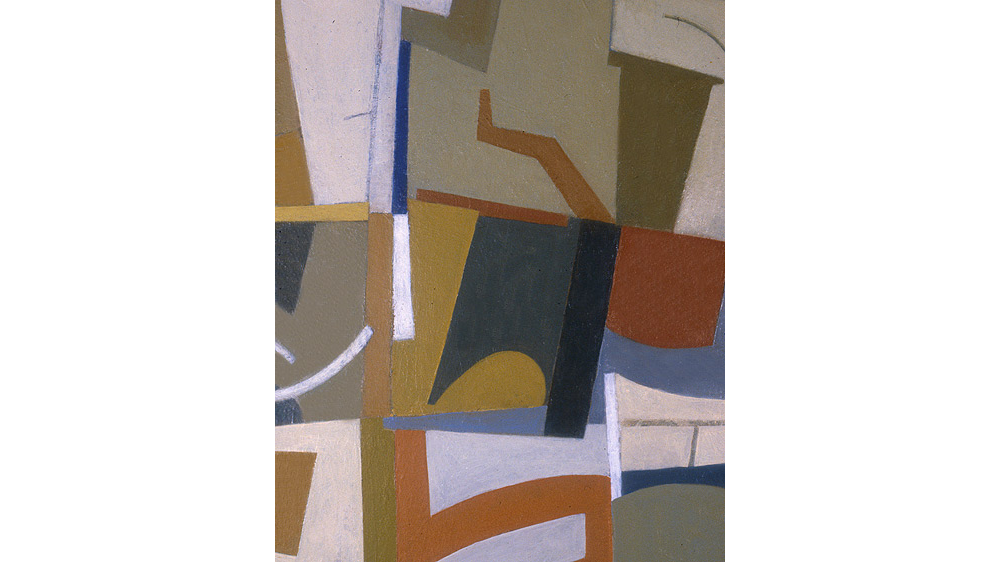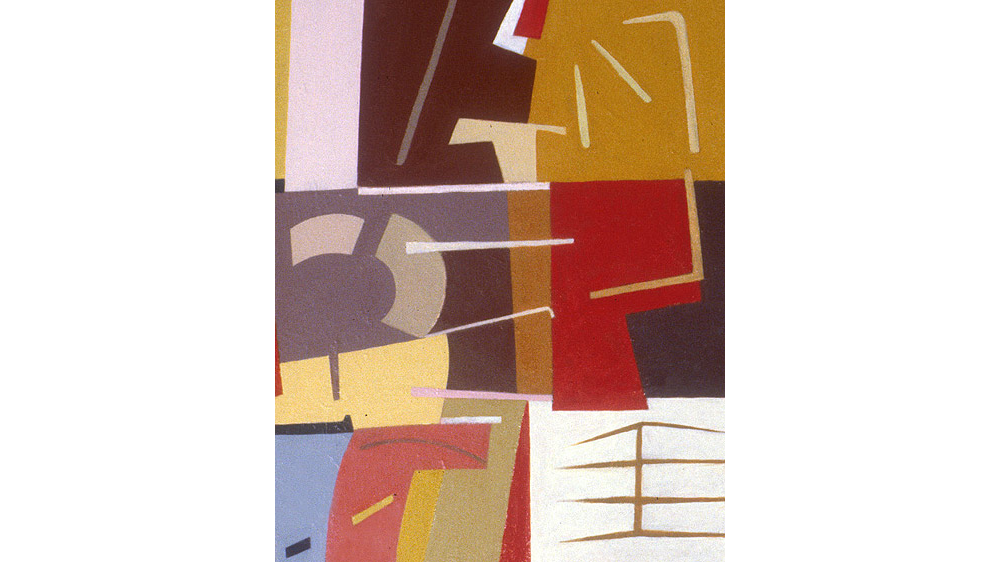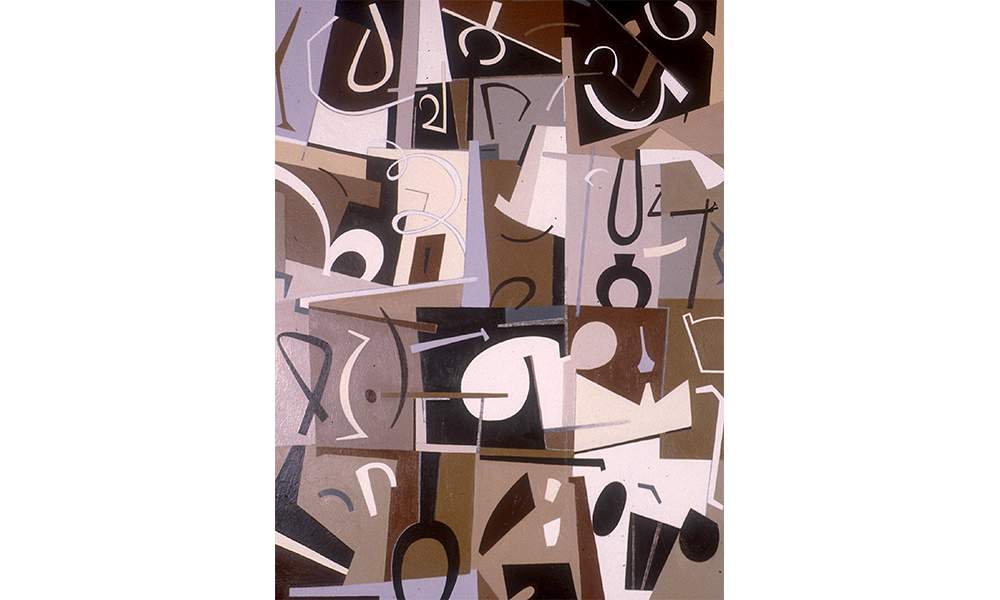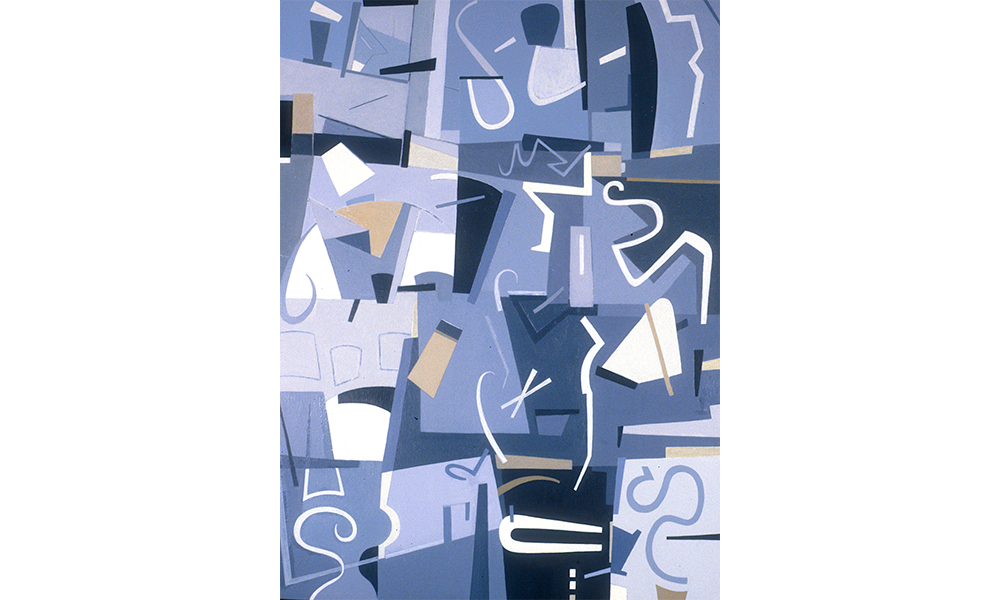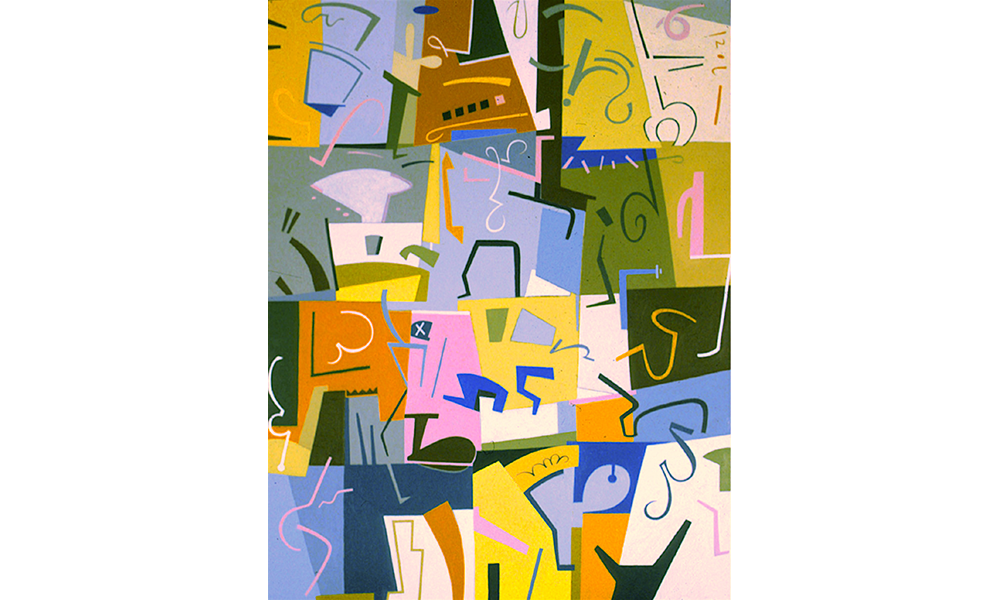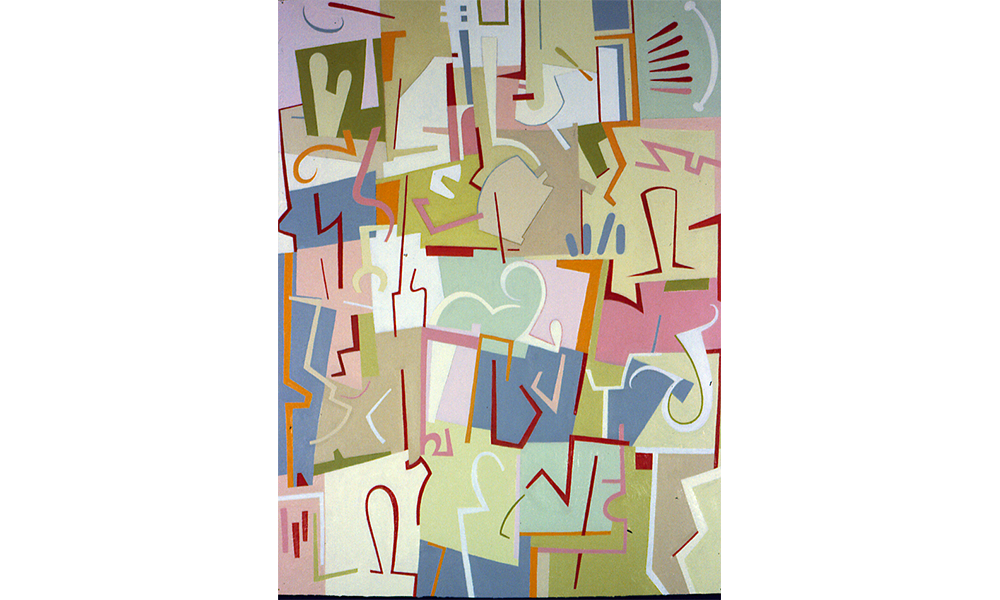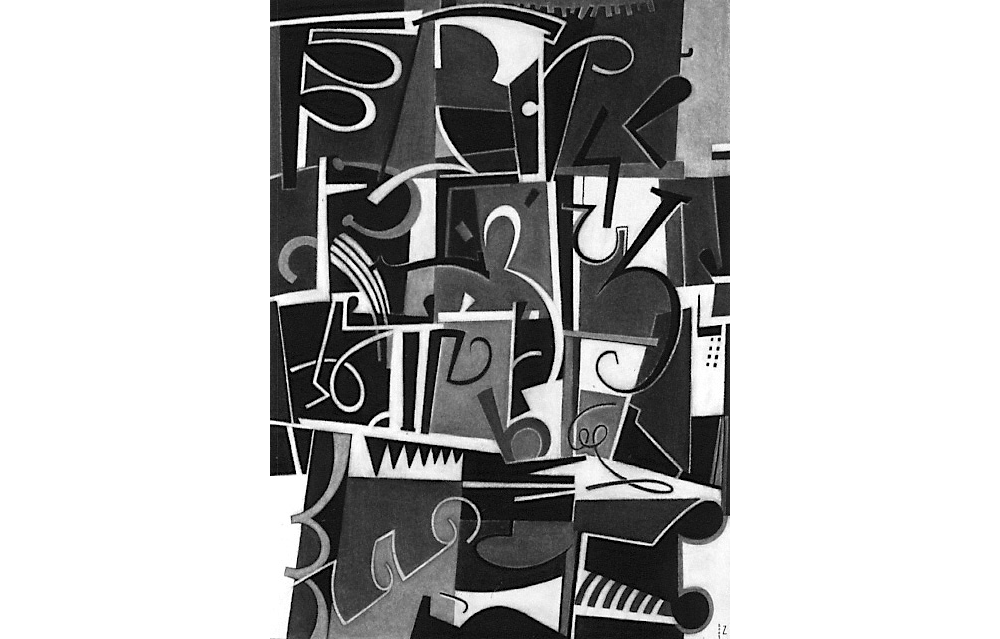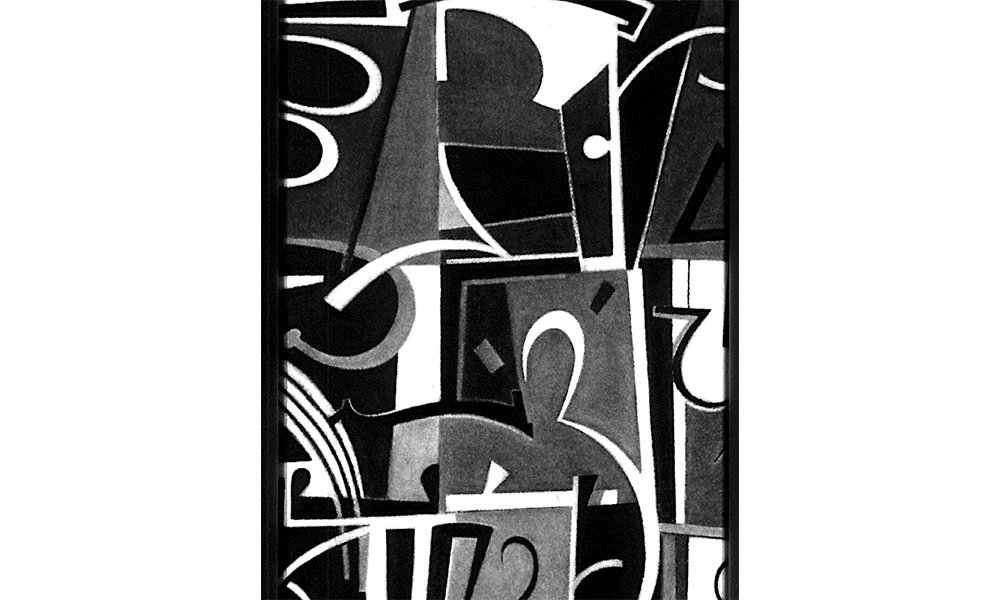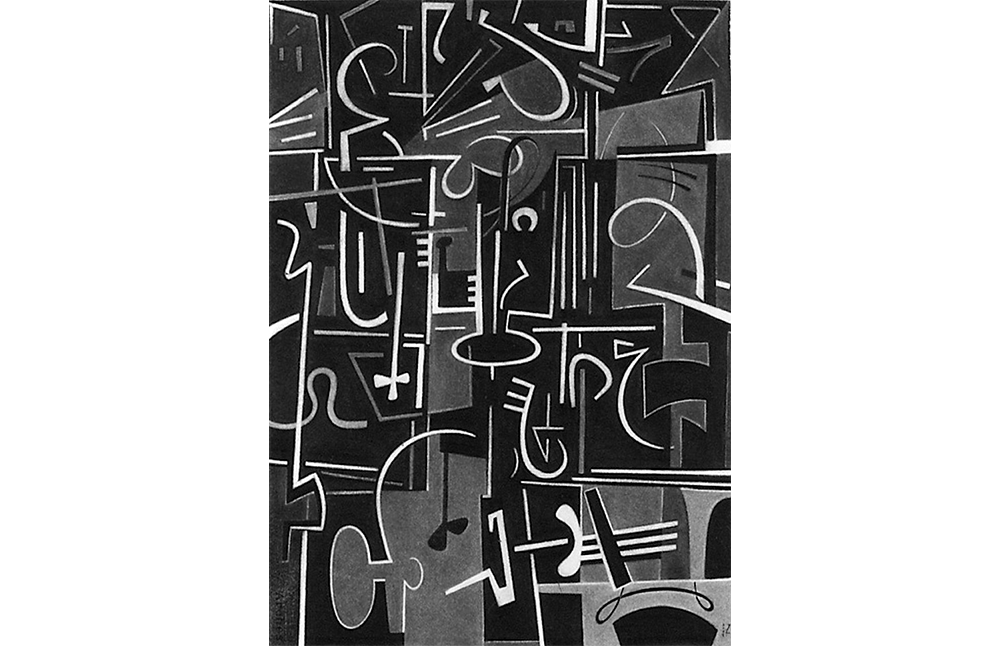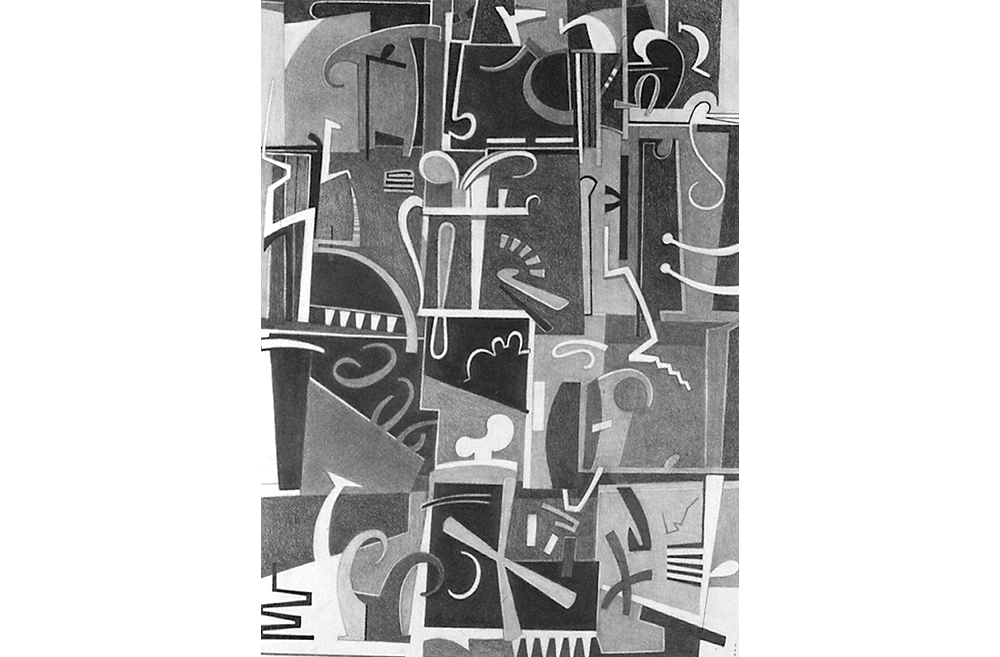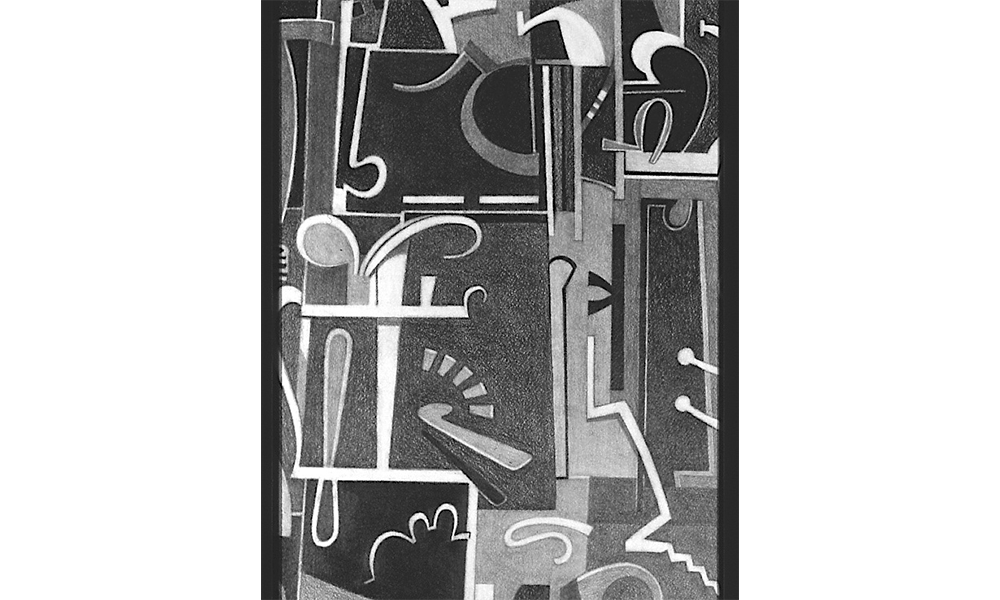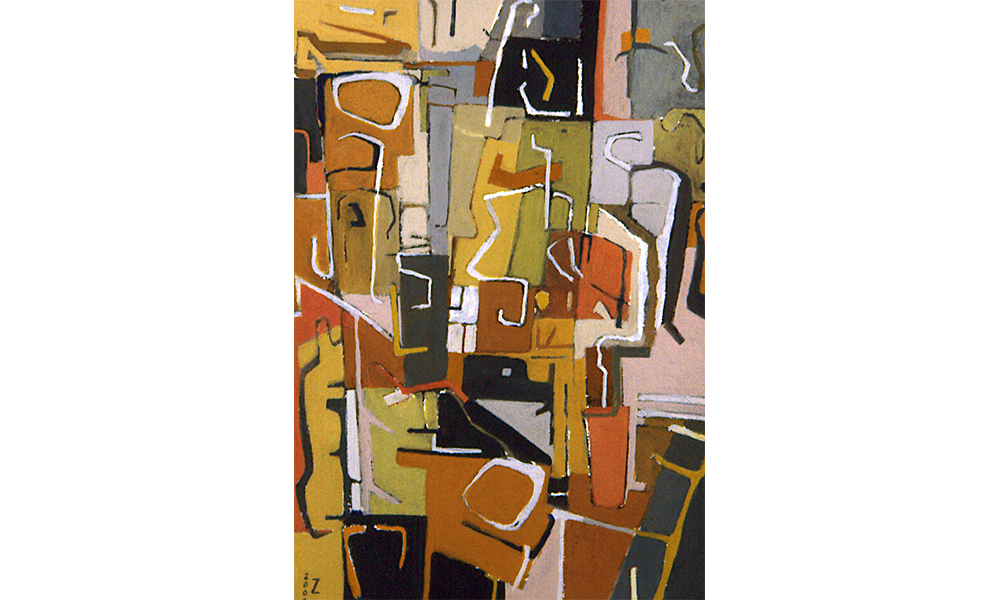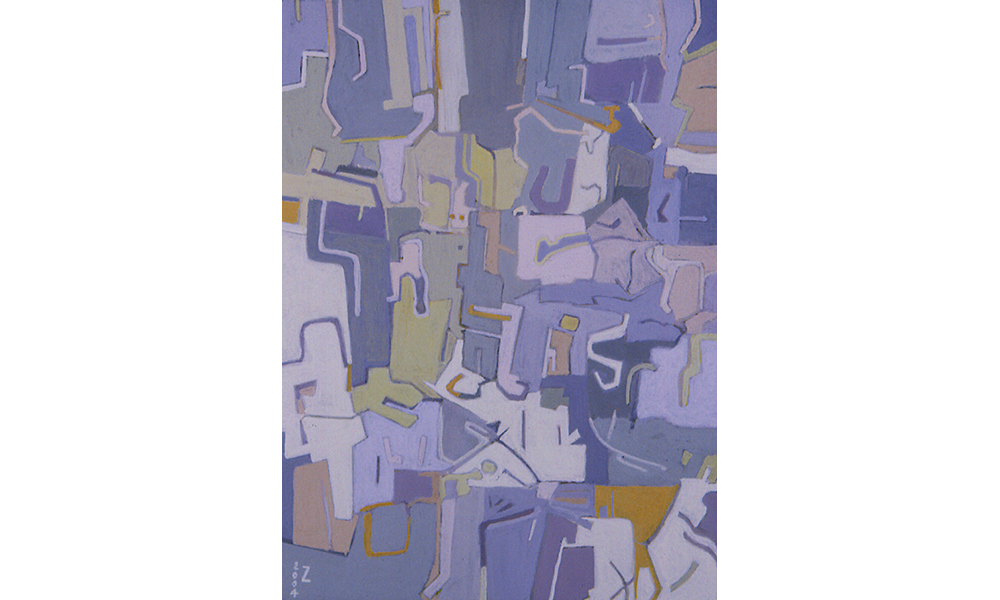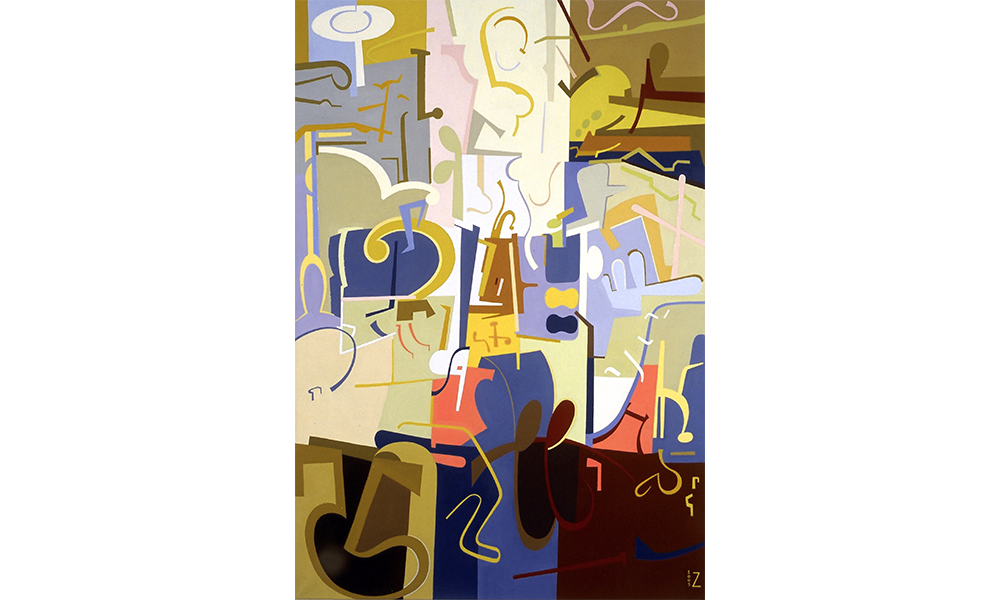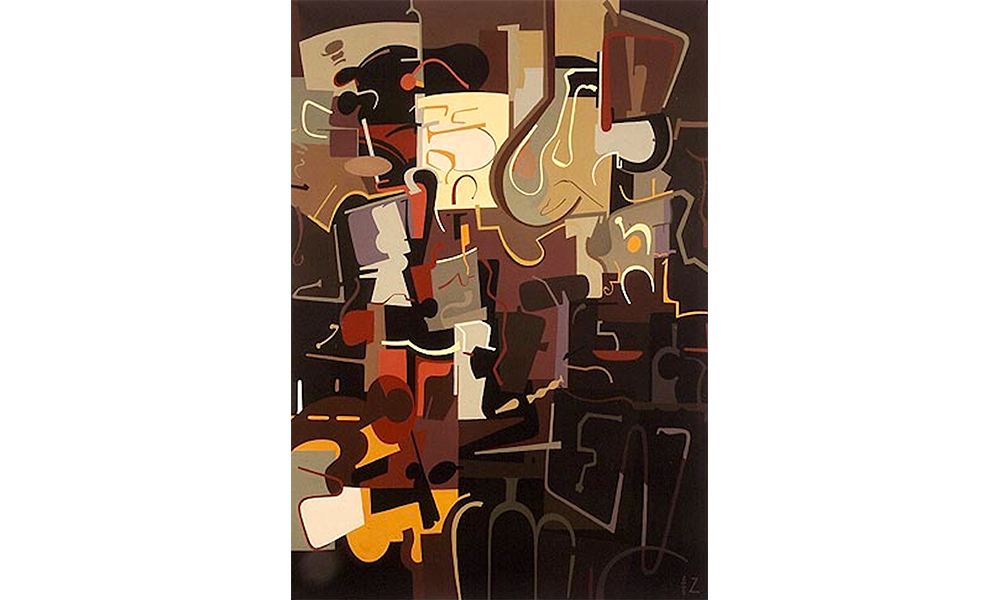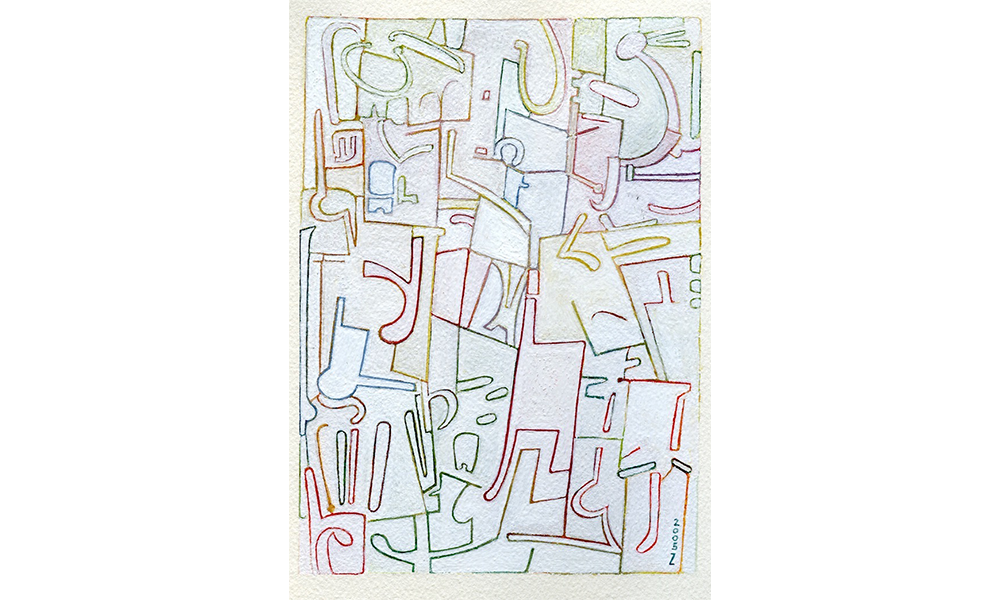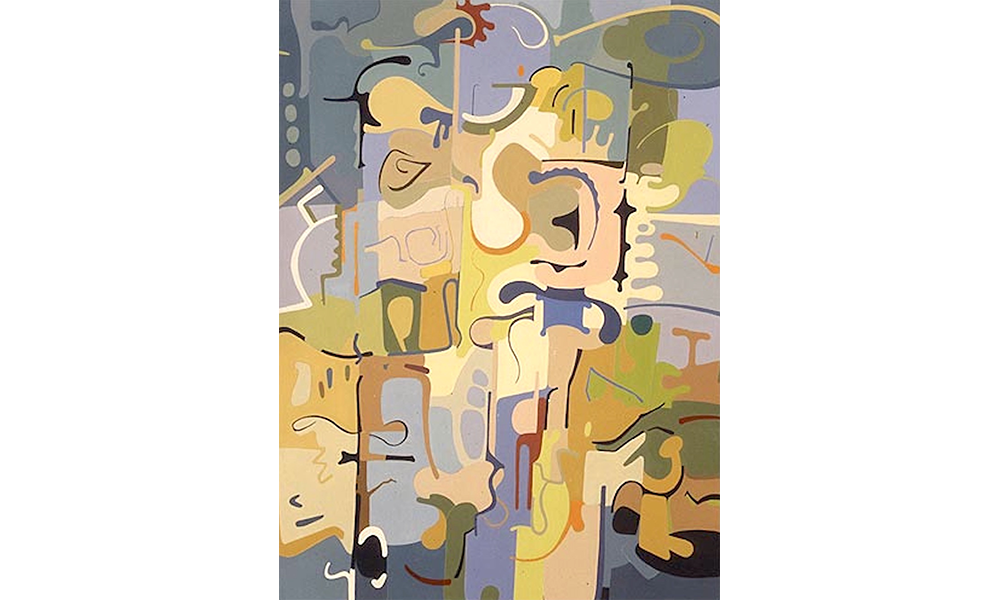The Stanzas
Stanza is the Italian word for “room”. Every painting, therefore, is a kind of large house of many rooms, a cut-away of what is occurring in each room and each rooms takes on it’s own unique character or one might say it is filled with characters and the events or narratives particular to that room. A stanza is also a block of words or phrases as in a poem, or lyrics in a song. As with all language these are the parts of some greater whole. Some of the mark-making may allude to glyphs and ciphers, images or parts of images, figurative references and narrative cycles. They are all marks that are immanently human marks.
Each work presses at the edges of a defined structure, the way a poet might work within the structure of a sonnet, sestina, or pantoum. Still, the drawn or “pulled” mark is dominant and these lines and colors are the organizing principles within each. These grids of “events” bump and draw into one another. There are doors and windows to climb through, a framing of the action purposefully designed into a balance which, I must tell you, absolutely refuses to remain entirely within its own boundaries but will elude the box, traverse to the next, and make conversation with adjacent neighbors. I want to have the formal pentameter of blank verse, but the option, the opportunity, to invest and be surprised by the possibilities of variegated dialogues. I want the formal parallelism likened to sound in both music and poetry as with certain repetitions that reinforce the inherent structure while also offering a dynamic which move the eye frame by frame. I want a playful improvisation that keeps my attention in the making of the work keeping monotony at arm’s length, that is, as one friend put it, “not hit the pattern fully”.
